研究成果
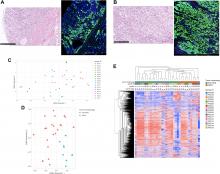
Jul, 2024
Gastric poorly cohesive carcinoma (PCC) manifests with a diffuse pattern and diverse tumor cell morphologies, often indicating a more unfavorable prognosis. Recent consensus has reclassified PCC based on the proportion of signet-ring cells (SRCs) in tumors for research purposes. The two most distinct subtypes, poorly cohesive carcinoma not otherwise specified (PCC-NOS) and signet-ring cell carcinoma (SRCC), are characterized by less than 10% and more than 90% SRCs, respectively. However, research comparing the clinicopathological and transcriptomic differences between these subtypes remains limited. In this study, we conducted a comparative analysis of clinicopathological features in 55 advanced-stage PCCs, consisting of 43 PCC-NOS and 12 SRCC cases. Subsequently, 12 PCC-NOS and 5 SRCC...
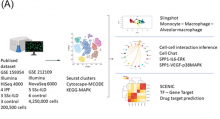
Jun, 2024
Background: Interstitial lung disease (ILD) is the primary cause of mortality in systemic sclerosis (SSc), an autoimmune disease characterized by tissue fibrosis. SSc-related ILD (SSc-ILD) occurs more frequently in females aged 30-55 years, whereas idiopathic pulmonary fibrosis (IPF) is more prevalent in males aged 60-75 years. SSc-ILD occurs earlier than IPF and progresses rapidly. FCN1, FABP4, and SPP1 macrophages are involved in the pathogenesis of lung fibrosis; SPP1 macrophages demonstrate upregulated expression in both SSc-ILD and IPF. To identify the differences between SSc-ILD and IPF using single-cell analysis, clarify their distinct pathogeneses, and propose directions for prevention and treatment. Methods: We performed single-cell RNA sequencing on NCBI Gene Expression Omnibus...
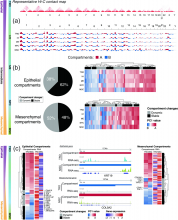
Jun, 2024
Epithelial-mesenchymal transition (EMT) is a dynamic process enabling polarized epithelial cells to acquire mesenchymal features implicated in development and carcinoma progression. As our understanding evolves, it is clear the reversible execution of EMT arises from complex epigenomic regulation involving histone modifications and 3-dimensional (3D) genome structural changes, leading to a cascade of transcriptional events. This review summarizes current knowledge on chromatin organization in EMT, with a focus on hierarchical structures of the 3D genome and chromatin accessibility changes.
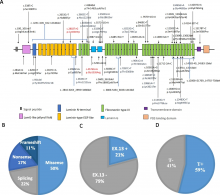
Jun, 2024
Background: Biallelic pathogenic variants in USH2A lead to Usher syndrome or non-syndromic retinitis pigmentosa, and shown to have geographical and ethnical distribution in previous studies. This study provided a deeper understanding of the detailed clinical features using multimodal imaging, genetic spectrum, and genotype-phenotype correlations of USH2A-related retinal dystrophies in Taiwan.
Results: In our cohort, the mean age at first visit was 47.66 ± 13.54 years, and the mean age at symptom onset, which was referred to the onset of nyctalopia and/or visual field constriction, was 31.21 ± 15.24 years. Among the variants identified, 23 (50%) were missense, 10 (22%) were splicing variants, 8 (17%) were nonsense, and 5 (11%) were frameshift mutations. The most predominant variant was c...
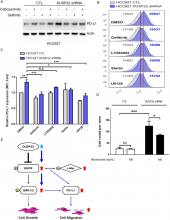
Jun, 2024
DUSP22, an atypical dual-specificity phosphatase enzyme, plays a significant role in regulating multiple kinase signaling pathways by dephosphorylation. Our study demonstrated that decreased DUSP22 expression is associated with shorter disease-free survival, advanced TNM (tumor, lymph nodes, and metastasis), cancer stage, and higher tumor grade in lung adenocarcinoma (LUAD) patients. Exogenous DUSP22 expression reduces the colony-forming capacity of lung cancer cells and inhibits xenograft tumor growth primarily by targeting EGFR and suppressing its activity through dephosphorylation. Knockdown of DUSP22 using shRNA enhances EGFR dependency in HCC827 lung cancer cells and increases sensitivity to gefitinib, an EGFR inhibitor. Consistently, genetic deletion of DUSP22 enhances EGFRdel (exon...
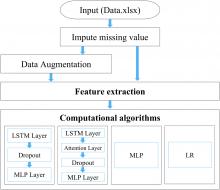
Jun, 2024
Background: Recessive GJB2 variants, the most common genetic cause of hearing loss, may contribute to progressive sensorineural hearing loss (SNHL). The aim of this study is to build a realistic predictive model for GJB2-related SNHL using machine learning to enable personalized medical planning for timely intervention.
Method: Patients with SNHL with confirmed biallelic GJB2 variants in a nationwide cohort between 2005 and 2022 were included. Different data preprocessing protocols and computational algorithms were combined to construct a prediction model. We randomly divided the dataset into training, validation, and test sets at a ratio of 72:8:20, and repeated this process ten times to obtain an average result. The performance of the models was evaluated using the mean absolute error...
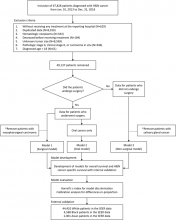
Jun, 2024
Purpose: This study aims to raise awareness of the disparities in survival predictions among races in head and neck cancer (HNC) patients by developing and validating population-based prognostic models specifically tailored for Taiwanese and Asian populations.
Methods: A total of 49,137 patients diagnosed with HNCs were included from the Taiwan Cancer Registry (TCR). Six prognostic models, divided into three categories based on surgical status, were developed to predict both overall survival (OS) and cancer-specific survival using the registered demographic and clinicopathological characteristics in the Cox proportional hazards model. The prognostic models underwent internal evaluation through a tenfold cross-validation among the TCR Taiwanese datasets and external validation across...
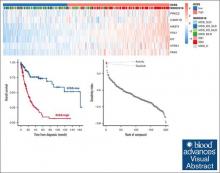
May, 2024
The human kinome, which comprises >500 kinases, plays a critical role in regulating numerous essential cellular functions. Although the dysregulation of kinases has been observed in various human cancers, the characterization and clinical implications of kinase expressions in myelodysplastic syndromes (MDS) have not been systematically investigated. In this study, we evaluated the kinome expression profiles of 341 adult patients with primary MDS and identified 7 kinases (PTK7, KIT, MAST4, NTRK1, PAK6, CAMK1D, and PRKCZ) whose expression levels were highly predictive of compromised patient survival. We then constructed the kinase stratification score (KISS) by combining the weighted expressions of the 7 kinases and validated its prognostic significance in 2 external MDS cohorts. A...
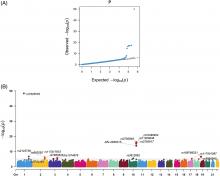
May, 2024
"Background: To identify genotypes associated with neovascular age-related macular degeneration (nAMD) and investigate the associations between genotype variations and anti-vascular endothelial growth factor (VEGF) treatment response.
Methods: This observational, retrospective, case series study enrolled patients diagnosed with nAMD who received anti-VEGF treatment in National Taiwan University Hospital with at least one-year follow-up between 2012 and 2020. A genome-wide association study (GWAS) was conducted on enrolled patients and controls. Correlations between the genotypes identified from GWAS and the treatment response of functional/anatomical biomarkers, including visual acuity (VA), presence of intraretinal or subretinal fluid (SRF), serous or fibrovascular pigmented...
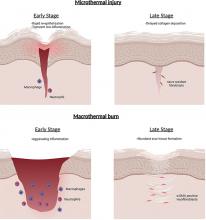
May, 2024
In adult mammals, wound healing predominantly follows a fibrotic pathway, culminating in scar formation. However, cutaneous microwounds generated through fractional photothermolysis, a modality that produces a constellation of microthermal zones, exhibit a markedly different healing trajectory. Our study delineates the cellular attributes of these microthermal zones, underscoring a temporally limited, subclinical inflammatory milieu concomitant with rapid re-epithelialization within 24 hours. This wound closure is facilitated by the activation of genes associated with keratinocyte migration and differentiation. In contrast to macrothermal wounds, which predominantly heal through a robust myofibroblast-mediated collagen deposition, microthermal zones are characterized by absence of wound...